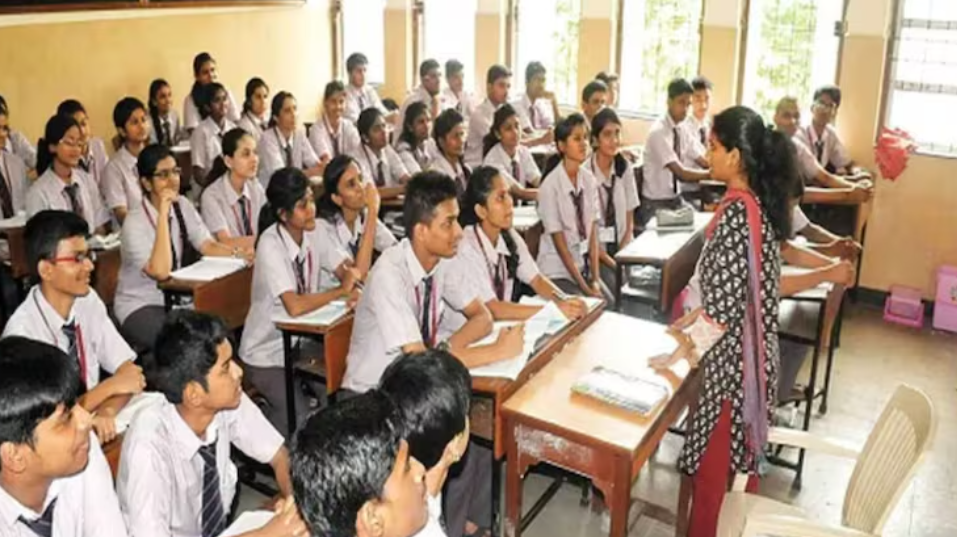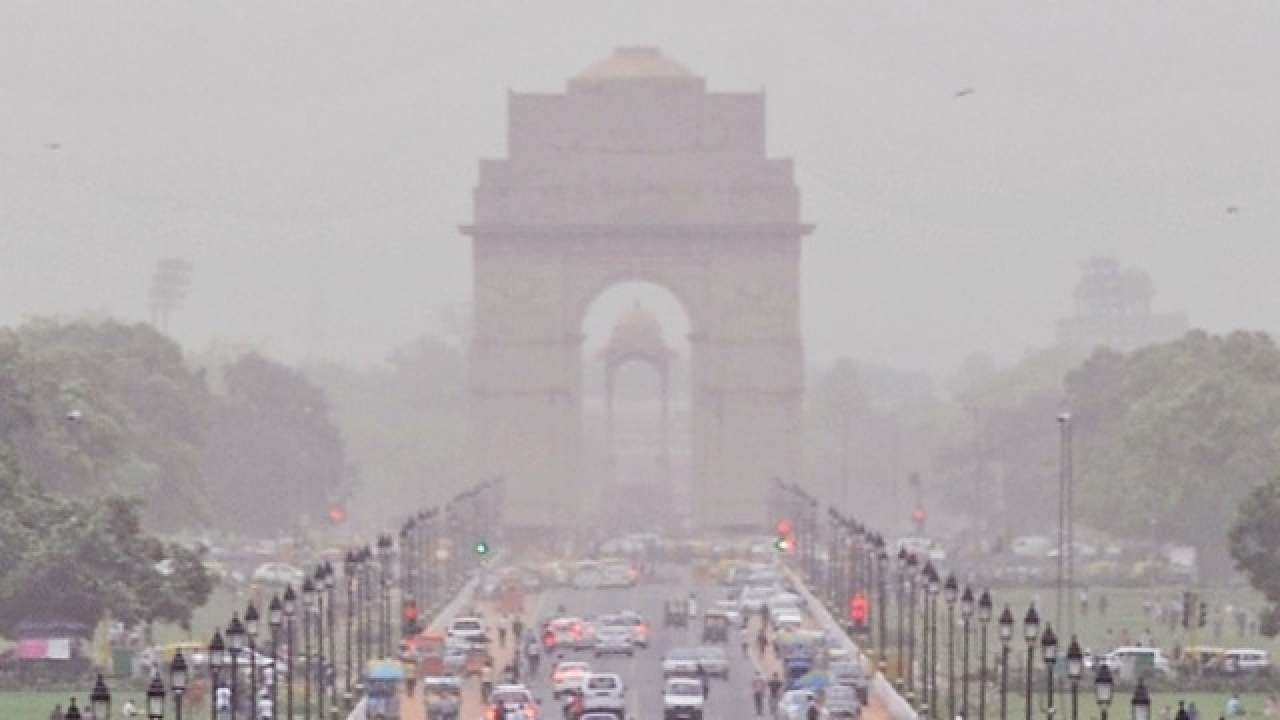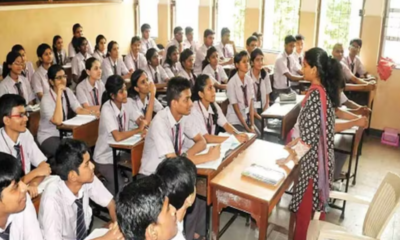India News
Harappa to Haryana, a shift in understanding
Published
9 years agoon
By

[vc_row][vc_column][vc_column_text]With about 1,500 archaeological sites in India coming to light in recent years, there’s euphoria in some circles over the eastward migration of the focus of what was hitherto known as the Indus Valley Civilisation. But matters of ‘nationalist’ pride aside, what do these finds, especially the ones in the northern state, show?
By Meha Mathur
How archaeological discoveries alter our understanding of history and make redundant an entire body of historical research and writing! The Indus Valley Civilisation of the third millennium BC was so called because before Independence, most of the sites that came to light were located in the Indus Valley—the most noticeable of which were Harappa and Mohenjo-daro.
After Partition, India was rendered poorer, being left with just a handful of sites, like Kalibangan, Dholavira, Daimabad and Lothal, to boast of as outposts of Indus valley culture. But now, about 1,500 sites have been discovered in India, as compared to the just-about-400 in the Indus Valley region.
Of these, Rakhigarhi has emerged as the most important site. This site, excavated first in 1997-2000 by the ASI and in 2015 by the Deccan College and Haryana Archaeological Survey under the supervision of Dr Vasant Shinde, has revealed a goldmine of information on the Harappan culture. In terms of geographical area, it’s bigger than Harappa and Mohenjo-daro. The five mounds that have been excavated—a large area can’t be dug up because of the settlement existing on the site—reveal urban features that correspond to Harappa and Mohenjo-daro.
Rakhigarhi speaks of a continuous occupation starting from the pre-Harappan phase to one of urbanization. In the pre-Harappan phase dating to around 6th millennium BC, there were circular huts. Bricks were introduced at a later stage.
Dr Amarendra Nath, former director (archaeology), Archaeological Survey of India, who conducted the excavations at Rakhigarhi in 1997-2000, describes the range of economic activities at this site, located along the once-existent Drishadvati river. He says there’s evidence of internal network of acquisition of raw material from Mathura, the Sulaiman, Aravali and Shivalik ranges of mountains and the Hajra hills in Pakistan. They got semi-precious stones and mollusc shells from Kutch—the latter used for purpose of making bangles.
Archaeologists have also been able to identify production processes, Dr Nath said. For example, residue of mollusc shells have been found after the product had been prepared, indicating that artisans were located there. Similarly, stages of bead-work (from acquiring the material through chiseling and polishing to the finished product) have been identified. There is also presence of cylindrical seals which are considered to have been imported from Mesopotamia.
Wazir Chand, a resident of Rakhigarhi, describes what a rich repository of material remains of the civilisation Rakhigarhi has been. As a child, he would come back home with bagsful of terracotta toys from the site to play with. As the site came to the notice of archaeologists, and they came to know of this young boy having such a treasure trove, they enlisted his support in their expeditions and he has become a rich resource-person, guiding the who’s who of India, including Pranab Mukherjee, and giving interviews to international publications. He had his own small museum, housed in a room, but later handed over his collection to the ASI.
As he guides us through the mounds, now covered with ugly black sheets and topped with layers of soil to protect the structures, he points to the presence of carnelian beads, perforated jars, wheeled toys with and many more items typical of Harappan culture. And he picks up shards of broken pottery—the mounds are strewn with these, among cow dung cakes as also garbage—to describe what the original object would have been like.
Beliefs of the early residents can also be gleaned through the skeletons that have been found in the cemetery area. These show the importance that women enjoyed in the society. Dr Nath says the number of offerings made to them were more than what the men got. Gold and jewellery, including shell bangles, was offered to them. And he ventures to add that this is a legacy that continues to this date.
As to the famed Harappan culture town planning, there was a citadel, surrounded by mud brick fortification wall. It had platforms, brick well, fire altars, drains of various sizes. But if you think you can drive down to have a glimpse of the well-planned streets, you will be disappointed. Because the bricks used were sun-baked, they can disintegrate fast if exposed to moisture, and therefore as a precaution, archaeologists cover the entire site with black sheets once the excavations are done.
Among the other sites excavated in Haryana are Kunal village, Bhirrana and Banawali in Fatehabad district and Farmana in Rohtak district.

The star is a common motif found on pottery. It is believed to have been used as an identification mark for commerce
This writer got a chance to visit some of these sites in the sweltering heat of April, with a dedicated foot soldier of archaeology, Appu Singh. A postgraduate in Ancient History, Appu Singh is pursuing his PhD in Archaeology while teaching at a school, and has traversed hundreds of kilometers on each scouting expedition, hunting for possible sites. From the terrain of the villages he can make out that a given village or field is sitting on a minefield of archaeological finds. Conversing with villagers, looking at the pottery shards lying around and taking a recording of geographical coordinates, he reports to senior archaeologists.
This author got to visit some of the prominent sites with Singh.
At Kunal in Fatehabad district, Hakra Ware, a pottery type associated with pre-Harappan phase has been found by archaeologists. Hakra Ware was followed by Harappan pottery—red beakers and jars. From below-ground level houses to above ground houses of standardized mud brick have been excavated. Steatite and shell seals bearing geometric pattern have also been found. A strikingly neat star design on a pottery shard could have been an identification mark used by traders, says Singh. Jewellery including a silver tiara, gold ornaments, semi-precious stones and beads of lapis lazuli and agate are also found.
Banawali in Fatehabad district is fortified site, where all early, mature and late Harappan phases have been found. Historian Upinder Singh, in her book “A History of Ancient and Early and Early Mediaval India” writes that the Early Harappan phase wasmarked by mud brick houses with hearths and plastered storage pits. Pottery was red or pink, with black designs. A wall divided the fortified town into citadel and lower town. The citadel had its own fortification, including a moat. Mud brick houses had raised platform (chabutara).
An interesting find at the site was a well that has been covered with a shed for protection from natural elements. Perhaps other sites can take a cue from this site and cover sections of excavated houses to realize the tourist potential. The well was made of baked bricks. Baked bricks were also used for bathing area, pavements and drains. As Upinder Singh writes, a multi-roomed house revealed a bathroom too. Many seal were recovered from this house. From another house lots of beads of gold, lapis lazuli, carnelian, a touchstone with streaks of gold were found.
Bhirrana in Fatehabad is the oldest site found so far, dating to 7th millenium BC. The site has revealed continuous occupation, starting from pre-Harappan phase of Hakra Ware, early Harappan and mature Harappan. In early Harappan phase, mud brick houses including one with six rooms and a central courtyard have been found. Red pottery, bichrome ware, jewelry, bull figurine, rattle, wheel, terracotta bangles, carnelian, steatite, shell, bone objects, pounders, gamesmen have been found.
As far has town planning is concerned, there was a massive fortification wall of mud brick and multi-roomed houses. One house had 10 rooms with a verandah and courtyard, writes Upinder Singh. Another house with six rooms had floor with mud brick. Its brick walls were plastered with mud. There was a 4.8 meter road running north to south. A red pottery piece with female figure like dancing girl has also been found.
The excavations at these sites have helped our understanding of the Harappan civilization in two ways: demonstrating that there was continuous occupation at these sites from Pre-Harappan and early Harappan to mature and late Harappan phases, and therefore that these were indigenous settlers, who evolved from being pit dwellers to rural and semi-rural and finally urban settlements.
And also in showing that it was a vast civilisation not confined to the Indus valley. It was not that the sites of Kalibangan in Rajasthan, Lothal in Gujarat and Daimabad in Maharashtra were some distant outposts. Rather, there were numerous thriving urban settlements with production bases and trading.
Broadly, the settlements found in Haryana were along the banks of two rivers that have dried up, and it’s open to debate whether the rivers that sustained these sites are Saraswati and Drishadwati that are mentioned in the Vedas.
Do these sites also shed light on how the Harappan culture might have declined? Entire generations of history students, like this writer, grew up reading the Aryan invasion version of ancient Indian history. The decline of “Indus Valley” culture due to either climatic reasons and/or attacks from Aryan tribes from Eurasia pushed the settlers of Indus valley sites deep into the forests of peninsula, who alternatively became dasas, dasyus or the Dravidian populace.
The Indus culture was understood to have declined around 1800-1700 BC, while the Rig Veda, which was supposed to be the mouthpiece of the invading tribes of Aryans, was composed around 1500-1200 BC, and the Mahabharata, which suggests the eastward movement of Aryans during the later Vedic age, was composed around 1000 BC to 800 BC.
But Dr Amarendra Nath provides a new dimension: It was palaeo-climatic event which was responsible for the decline of Harappan sites. As it became difficult to live in an area due to depleting resources, people shifted to other areas where they found water and space for agriculture. Small clusters started moving from Saraswati-Drishadwati valley to Yamuna plains. He says had there been attacks, there would have been multiple skeletal remains in one level. But that is not the case. The skeletons have been found from different levels. And even if we have identified killings, these are from different levels.
An important question that needs to be answered is: as people migrated, they would have carried their knowledge and skills with them. But do we find that level of skills in settlements where they migrated? Do we find the same level of urbanisation and economic activities over the next few centuries?
Dr Nath answers that urban lifestyle can decay. In Harappan culture, urban lifestyle grew because of trade, including foreign trade. Trade can survive only when there is market. And when the market dies due to any reason, the industry collapses. And those artisans look for other modes of survival and go to agriculture. The skilled artisans would have started catering to local needs.
This happens even today. He cites the example of Kathputli (puppet) performers, who might be forced to start driving e-rickshaws if we stop seeing kathputli shows.
Rather than looking at the decay through Aryan invasion prism, he says, one should realize that the Indian civilisation is a civilization of continuity where things survived despite odds and people moved in search of livelihood. He goes to the extent of saying that we find almost everything in Harappan civilisation which is found in Vedic literature. Only thing is we should look for it.
On the question of migration of tribes from West to East, he says: “No, people were coming, just as people were going from here–Indus to Mesopotamia. Indus seals have been found there, implying that some commodities were transported from Harappa to Mesopotamia and seals discarded after opening consignment.”[/vc_column_text][/vc_column][/vc_row]
India News
Chaos mars Lionel Messi’s Kolkata GOAT Tour event as fans protest poor arrangements
Lionel Messi’s brief appearance in Kolkata was overshadowed by chaos as fans alleged mismanagement, prompting an apology and an official enquiry by the state government.
Published
1 day agoon
December 13, 2025
Lionel Messi’s much-anticipated appearance in Kolkata turned chaotic on Saturday after thousands of fans alleged mismanagement at the Yuva Bharati Krirangan, leaving many unable to even see the Argentine football icon despite holding high-priced tickets
Fans express anger over limited access
The Kolkata leg of the G.O.A.T. Tour was billed as a special moment for Indian football fans, with ticket prices ranging between Rs 5,000 and Rs 25,000. However, discontent grew rapidly inside the stadium as several attendees claimed their view of Messi was obstructed by security personnel and invited guests positioned close to him.
As frustration mounted, some fans resorted to throwing chairs and bottles from the stands, forcing organisers to intervene and cut the programme short.
Event cut short amid disorder
Messi reached the venue around 11:15 am and remained there for roughly 20 minutes. He was expected to take a full lap of the stadium, but that plan was abandoned as the situation deteriorated soon after he emerged from the tunnel.
The disorder also meant that prominent personalities, including actor Shah Rukh Khan, former India cricket captain Sourav Ganguly and West Bengal Chief Minister Mamata Banerjee, could not participate in the programme as scheduled.
Organisers whisk Messi away
With fans breaching security and some vandalising canopies set up at the Salt Lake Stadium, the organisers, along with security personnel, escorted Messi out of the venue to prevent further escalation.
Several attendees described the event as poorly organised, with some fans calling it an “absolute disgrace” and blaming mismanagement for spoiling what was meant to be a celebratory occasion.
Mamata Banerjee apologises, orders enquiry
Chief Minister Mamata Banerjee later issued a public apology to Messi and the fans, expressing shock over the mismanagement. She announced the formation of an enquiry committee headed by retired Justice Ashim Kumar Ray, with senior state officials as members.
The committee has been tasked with conducting a detailed probe, fixing responsibility and suggesting steps to ensure such incidents are not repeated in the future.
India News
Delhi enforces new law to regulate fees in private schools
Delhi has notified a new law to regulate private school fees, capping charges, banning capitation fees and mandating transparent, committee-approved fee structures.
Published
2 days agoon
December 13, 2025
The Delhi government has officially brought into force a new law aimed at regulating fees in private schools, notifying the Delhi School Education (Transparency in Fixation and Regulation of Fee) Act, 2025. The notification was issued on Wednesday, nearly four months after the Bill was cleared by the Delhi Assembly and received approval from Lieutenant Governor V K Saxena.
The Act establishes a comprehensive framework to govern how private unaided schools fix and collect fees, with a clear emphasis on transparency, accountability and relief for parents facing repeated fee hikes.
What the new Act provides for
Under the legislation, private unaided recognised schools can charge fees only under clearly defined heads such as registration, admission, tuition, annual charges and development fees. The law caps registration fees at Rs 25, admission charges at Rs 200 and caution money at Rs 500, which must be refunded with interest. Development fees have been restricted to a maximum of 10 per cent of the annual tuition fee.
Schools have also been directed to disclose all fee components in detail and maintain separate accounts for each category. Any fee not specifically permitted under the Act will be treated as an unjustified demand.
The law strictly prohibits the collection of capitation fees, whether direct or indirect. It further mandates that user-based service charges must be collected strictly on a no-profit, no-loss basis and only from students who actually use the service.
Accounting norms and restrictions on surplus funds
To ensure financial transparency, schools are required to follow prescribed accounting standards, maintain fixed asset registers and make proper provisions for employee benefits. The transfer of funds collected from students to any other legal entity, including a school’s managing society or trust, has been barred.
Any surplus generated must either be refunded to parents or adjusted against future fees, according to the notification.
Protection for students and parents
The Act also places restrictions on punitive action by schools in fee-related matters. Schools are prohibited from withholding results, striking off names or denying entry to classrooms due to unpaid or delayed fees.
The law applies uniformly to all private unaided schools in Delhi, including minority institutions and schools not built on government-allotted land.
School-level committees to approve fees
A key feature of the legislation is the mandatory formation of a School-Level Fee Regulation Committee by July 15 each year. The committee will include five parents selected through a draw of lots from the parent-teacher association, with compulsory representation of women and members from Scheduled Castes, Scheduled Tribes and socially and educationally backward classes.
A representative from the Directorate of Education will also be part of the panel, while the chairperson will be from the school management.
Schools must submit their proposed fee structure to the committee by July 31. The committee can approve or reduce the proposed fees but cannot increase them. Once finalised, the fee structure will remain fixed for three academic years.
The approved fees must be displayed prominently on the school notice board in Hindi, English and the medium of instruction, and uploaded on the school website wherever applicable.
The Delhi government had earlier described the legislation as a significant step towards curbing arbitrary fee hikes after widespread complaints from parents at the start of the academic session.
India News
Delhi air quality nears severe as smog blankets city, airport issues advisory
Delhi recorded very poor to severe air quality on Saturday, with dense smog affecting visibility and prompting an advisory from the city airport.
Published
2 days agoon
December 13, 2025
Residents across Delhi and adjoining areas woke up to dense smog on Saturday morning, with air quality levels edging close to the ‘severe’ category in several locations
Data from the Central Pollution Control Board showed the overall Air Quality Index (AQI) at 390 at 8 am, placing it in the ‘very poor’ category. However, multiple monitoring stations in the national capital recorded AQI readings in the ‘severe’ range.
Areas reporting severe air quality included Anand Vihar (435), Ghazipur (435), Jahangirpuri (442), Rohini (436), Chandni Chowk (419), Burari Crossing (415), and RK Puram (404). The high pollution levels were accompanied by a mix of smog and shallow fog, which reduced visibility in several parts of the city during the early hours.
Smog reduces visibility, health risks rise
As per AQI classification, readings between 401 and 500 fall under the ‘severe’ category, indicating serious health risks. Officials note that prolonged exposure at such levels can trigger respiratory problems even among healthy individuals, while those with existing conditions face higher risks.
Dangerous pollution levels have become a recurring concern in Delhi during the winter months. On Friday as well, a thick haze covered the city, with the overall AQI recorded at 386 and visibility remaining poor in several localities.
Delhi airport activates low visibility procedures
Amid the deteriorating air quality, Delhi airport issued an advisory stating that low visibility procedures were in place. In a post on X, the airport confirmed that flight operations were normal at present but advised passengers to stay in touch with their respective airlines for the latest updates.
Despite some marginal improvement over recent weeks, large parts of the capital continue to remain under a blanket of toxic smog. The worsening situation has also intensified political sparring over pollution control measures in the city.

Chaos mars Lionel Messi’s Kolkata GOAT Tour event as fans protest poor arrangements

Delhi enforces new law to regulate fees in private schools
Delhi air quality nears severe as smog blankets city, airport issues advisory

US lawmakers move resolution to roll back Trump’s 50% tariffs on Indian imports













